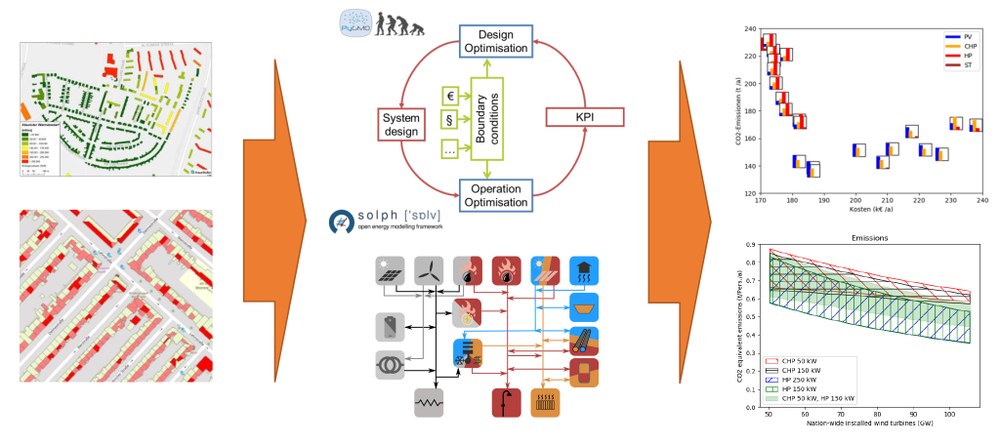Energy System Technology
The Energy Systems Technology department focuses on the interaction between system-relevant technologies within decentralised networked structures, particularly at the low-voltage and medium-voltage level.

With the MTRESS simulation model (Model Template for Renewable Energy Supply Systems), the Institute of Networked Energy Systems has developed a tool that can be used to optimise energy supply systems for new and existing projects at any location. The model facilitates the optimisation of energy systems for individual residential and commercial buildings as well as for neighbourhoods and entire industrial properties. It enables users to include a wide range of influencing factors and energy options in the simulation and minimises the planning effort.
This generic energy system model enables planning agencies, local authorities, energy suppliers or research institutions to analyse heat requirements in buildings and neighbourhoods in order to derive options for action for an optimised future energy supply on the basis of this data. The integration of ground-mounted PV or hydrogen infrastructures is also possible.
MTRESS (Model Template for Renewable Energy Supply Systems) requires appropriately prepared initial data on the boundary conditions of the respective project. A wide range of data sources can be used for this purpose. These include historical energy consumption data for the project, but also higher-level data on the location, for example from climate models or the solar cadastre. Assumptions about the development of costs and the CO2-impact of the future energy mix can also be incorporated into the modelling.
The range of applications for MTRESS becomes apparent when looking at projects such as "Wärmewende Nordwest". Here, heat recovery from an urban wastewater network is also taken into account, as well as geological information, to estimate geothermal potential, for example. The corresponding energy demand is presented in the form of an energy quantity measurement, which is based on real data for areas measuring 500 by 500 metres. This enables energy suppliers to provide required quantities of energy both qualitatively and quantitatively in a precise manner in future energy systems.
As an open source model, MTRESS is available to users in a wide range of areas. It can be used for research purposes or integrated for use for commercial purposes. Planning agencies can work with it, it can be used to create municipal heating plans or be part of the offering of home automation developers.
More information
